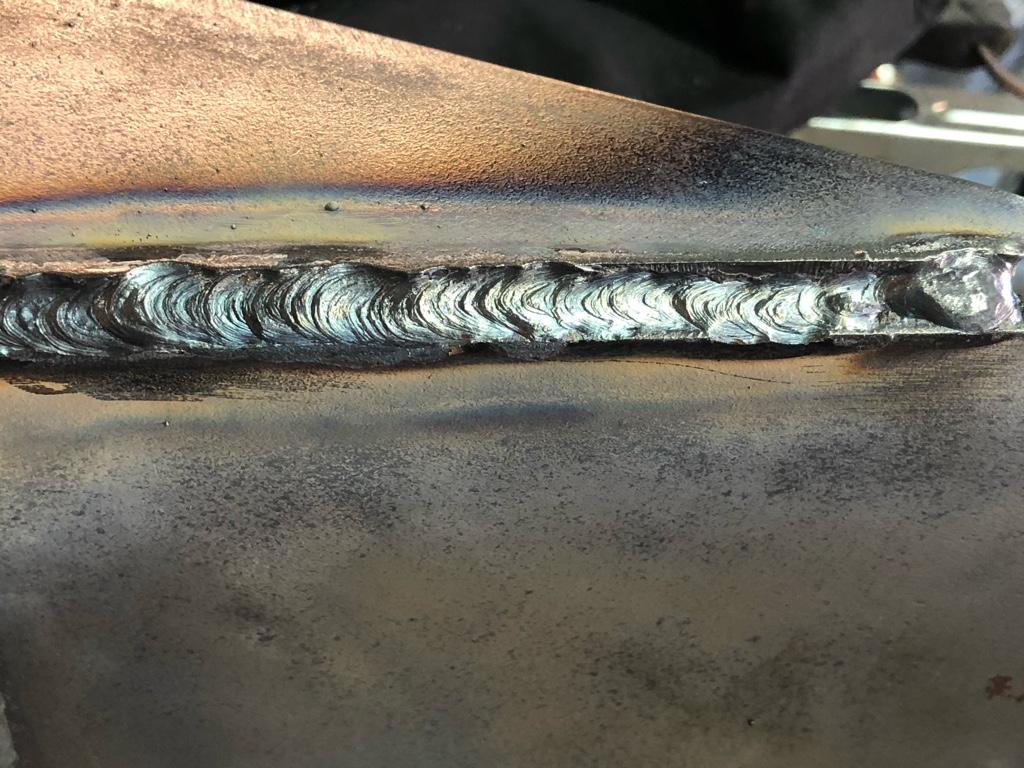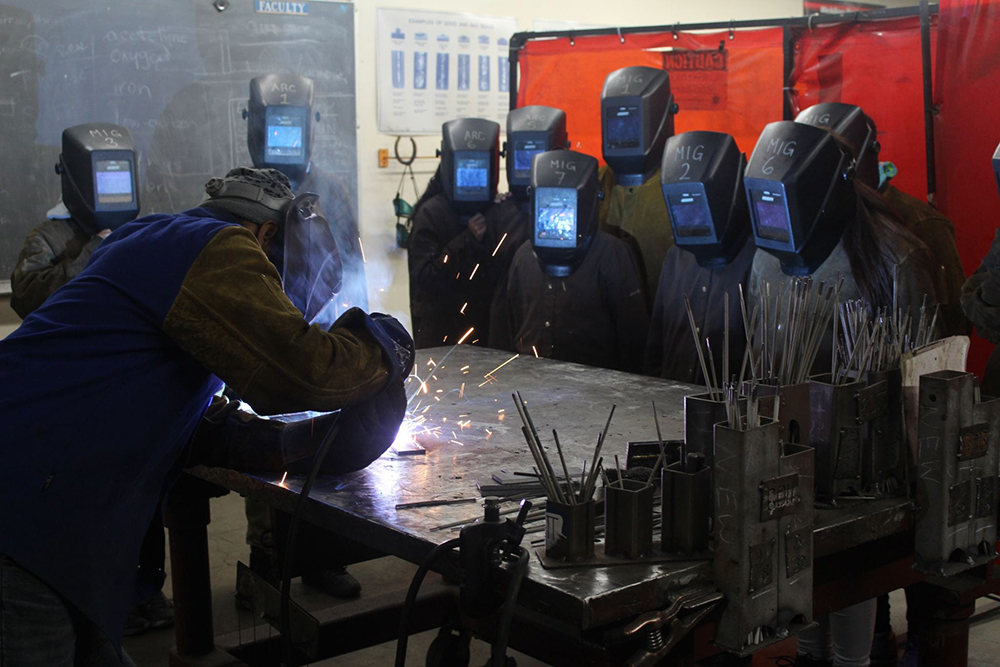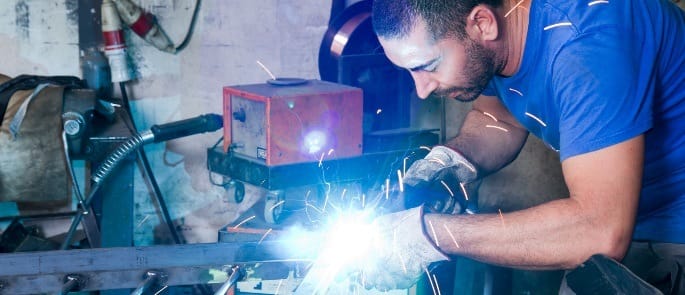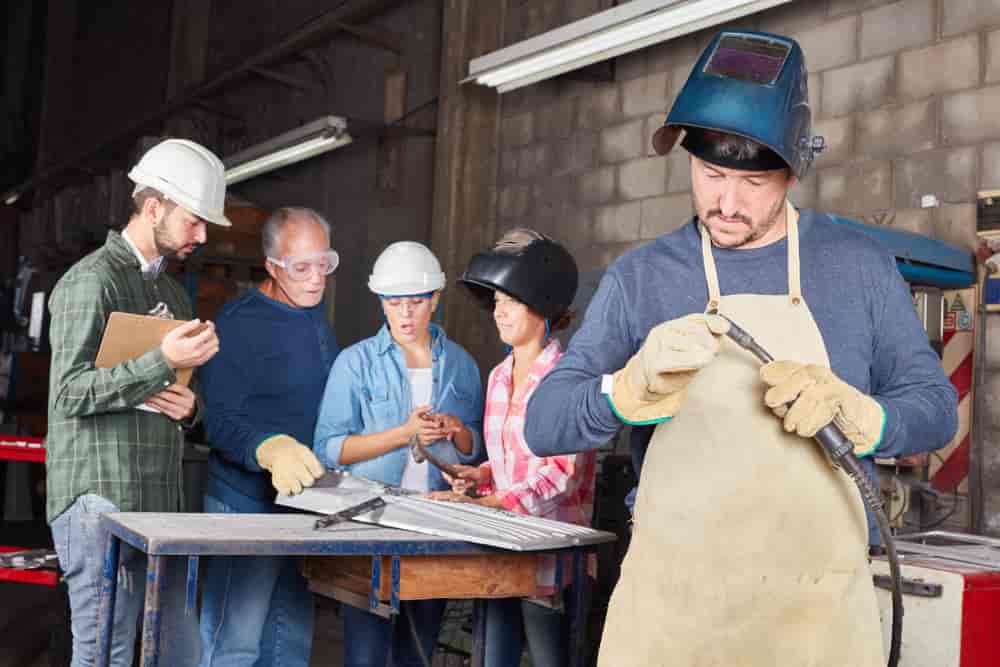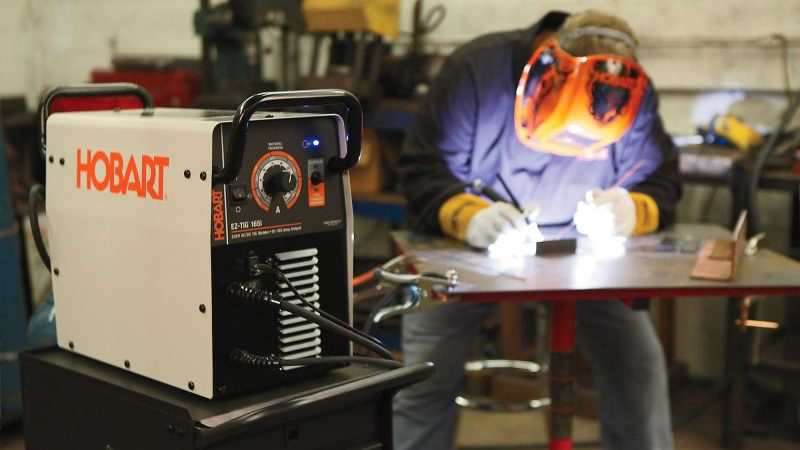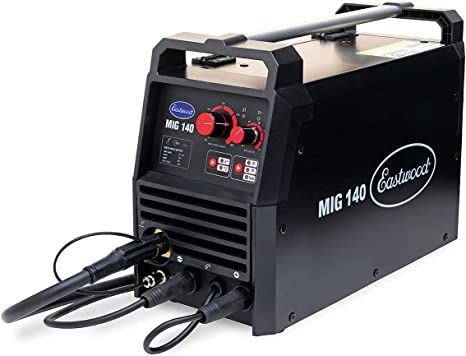

If you are looking for a welder, you may have come across the Forney Industries brand. This is a famous brand of welders known for their affordability and ease of use. In this blog post, we will be reviewing six different models of the Forney Easy Welder. We will talk about the pros and cons of each model and help you decide which one is right for you. Stay tuned for our in-depth reviews!
We considered such factors as how easy the welder is to use, the quality of the welds, the weight and dimensions, duty cycle, cables length, and any other additional features that may be helpful. We also took into account the price of each welder. After considering all of these factors, we have come up with our list of the six best Forney Easy Welders.
More features: lift start TIG operation only, 120/230 volts, 180 amperes, 6ft. power cord, 8 ft. electrode cable, 8 ft. clamp cable, single-phase, amperage adjustment
A powerful stick welder for the do-it-yourselfer, Forney Easy Weld 180 ST is an excellent choice for home and light industrial use. This high-quality welder features an adjustable amperage range of 180 amperes and welds up to 1/2 inches mild steel with 7018 welding wire. The AC stick welder also operates from a 120V power source and includes a 6ft. power cord, 8 ft. electrode cable, 8 ft. clamp cable, single-phase, and weighs 14 lbs. We recommend the Forney easy weld for those looking for a powerful and versatile stick welder.
This stick welder is still pretty good when it comes to durability but unlike the other models on the list, it is very lightweight and more portable as a result. The output being as high as 180A also makes it a high-amp model that can be adjusted if you need to. The welder has a long power cable and can be used in a variety of situations.
More features: 10ft. MIG gun, 8ft. electrode holder, 8ft. ground clamp, 20A-15A adapter, and one additional 0.030in. contact tip
Our top choice is the Forney Easy Weld 140 MP Multi-Process Welder, a 3-in-1 multi-process unit that lets you weld with MIG, DC TIG, and stick welding. With the 3-position fast switch, you can easily change between processes. The easy-start technology makes it simple for first-time users to get started on their projects. This unit features an output of 140 amps and a duty cycle of 30% at 80 amps for stick welding and 30% at 90 amps for MIG/DC TIG welding. The welder has a wire range of 0.023-0.030 for MIG welding and 0.030-0.045 for stick welding to handle various projects. The Forney Easy Weld 140 MP Multi-Process Welder also includes a 10-foot MIG gun, an electrode holder, and a work clamp so that you can get started right away.
The Forney Easy Weld 140 MP Multi-Process Welder having a long MIG gun makes it really easy to start and use in a variety of situations and has three different types of welding available, unlike the competitors. Unfortunately, the TIG accessories aren’t included with this so for TIG welding you have to buy a separate torch. There’s also no gas hose.
More features: Drag Torch Technology, 13ft. cutting torch, 8ft. ground clamp, 20A-15A adapter, one additional electrode, and one additional nozzle
The Forney Easy Weld 20P Plasma Cutter is the perfect tool for cutting and welding steel, stainless steel, aluminum, galvanized steel, brass, copper, and more. It features Drag Torch Technology for a smoother cut with less spatter than traditional torches. The built-in regulator and air dryer allow you to adjust the air pressure easily so you can use it on multiple types of metal. The lightweight and portable design make this plasma cutter an easy-to-use operation that can be used anywhere. The Forney Easy Weld 20P Plasma Cutter also has a built-in cooling fan for extended use.
The 13ft cutting torch is one of the longest on the list, setting it apart from the rest of the models. It also has some technology not included with every Forney Easy Welder on the list – a built-in regulator and an air dryer to enhance the functionality of the welder for use cutting and welding a variety of metals.
More features: 8 ft. electrode cable, 8 ft. clamp cable
Welding is a great skill to have, but it can be hard to get started. The Forney Easy Weld 100 ST Stick Welder makes it easy and affordable for beginners to get started with stick welding. Its lightweight, compact design allows you to take it anywhere and weld almost anything. This welder can handle up to 3/16-inch diameter electrodes, making it perfect for most household projects. It has an adjustable AC output from 90-100 amps, which means you can use this welder with a wide variety of materials, including steel, stainless steel, and cast iron.
This is the second most tiny and portable model on the market in the Forney brand. The Forney Easy Weld 100 ST Stick Welder is very small and great for those who need to be able to weld on the go and are not able to carry around large models. It still has a decent max cutting diameter of 3/16in too.
More features: 8ft. MIG gun, 8ft. ground clamp, 20A-15A adapter, and one additional 0.030in.
The Forney Easy Weld FC-i MIG Welder is one of the most versatile and best flux-core welders on the market, perfect for the beginner or experienced welder. This unit has a maximum output of 140 Amp and can handle 2-10lbs. rolls of 0.030in. Flux Core Wire. The welder features an infinite voltage control that allows you to set your desired output between 25A and 140A while maintaining constant wire feed speed at your desired setting (0-200 IPM). The welder also has a rugged, all-metal case that makes it easy to transport around the shop or job site.
The Forney Easy Weld 140 FC-i Flux-Core Welder can take flux core wire so it is perfect for applications that need this. It also features a better case than some of the cheaper models, and the wire feed speed control gives you a lot of different functionality and control of the welding application, whichever type of flux-core wire you are using.
More features: 8ft. electrode holder and 8ft. ground clamp
The Forney 298 Easy Weld is a great arc welder for beginners. It has a duty cycle of 30% at 80 amperes and an output of 90 amperes. This machine can weld up to 1/8 inch rod, making it perfect for small projects around the home or farm. The Forney 298 Easy Weld features 8-feet electrodes, an 8-feet ground clamp, and a 120-volt input power source. It is portable and easy to use, making it ideal for anyone who wants to learn how to weld but does not want the hassle of a bigger machine.
Compared to the other models on the list, this small and portable model is definitely the “beginners” pick. It does not handle foot pedal operation and does not operate at the same levels of heat you might expect. The TIG torch is not included, and this welder is more of a starter option but the portable design is great for first-time welders.
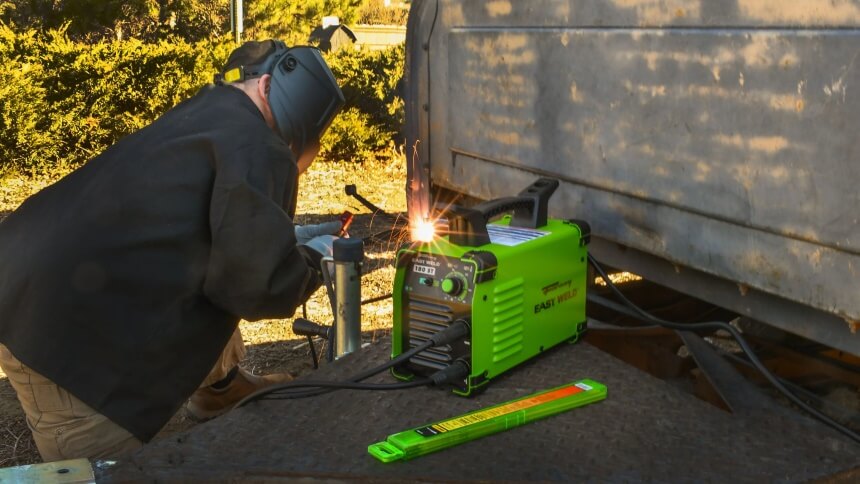
The two most common options for users are home welders and professional welders when it comes to welding. Home welders are smaller, less expensive, and easier to use than experienced welders. They are perfect for small projects or repairs around the house. Professional welders are larger, more expensive, and require more setup time than home welders require. They are better for larger projects or those who plan to weld frequently.
So, which option is best for you? It depends on your needs and how often you plan to weld. If you only need to weld occasionally for small projects, then a home welder would be a good choice. However, a professional welder would be better if you plan to weld frequently or for larger projects.
No matter which type of welder you choose, be sure to read the instructions carefully and always wear proper safety gear when welding.
Welders come in all shapes and sizes, making it difficult to choose the right one for your needs. In this guide, we will look at the size and weight of welders so you can make an informed decision before purchasing.
First, let us take a look at the size of welders. Welders range from small, portable models to large, industrial-sized machines. The size of the welder you need will depend on the type and amount of work you plan to do.
If you are only going to be doing light welding jobs, a small, portable welder will suffice. These welders are typically less expensive and can be easily moved from one job to another. However, they also have limited welding capabilities.
If you are looking for a welder that can handle heavier jobs, you’ll need to choose a larger and more durable model. These welders are typically more expensive but offer increased power and flexibility. They also tend to be heavier and harder to move around.
Now that you know about the different sizes of welders let’s look at their weight. Again, this will depend on the type of work you plan to do.
When looking for the power for your welding needs, it is crucial to consider various factors. The welder’s output amperage, for example, will determine the size and thickness of metal that can be welded. Therefore, a welder with an output of around 100 amps should suffice for smaller projects. However, you will need something more powerful for bigger projects – or if you plan to do heavy-duty welding. A welder with an output of 250 amps or more would be a good choice for those situations. Voltage is another essential consideration.
Lower voltages are better for thinner metals, while higher voltages are necessary for welding thicker metals.
Another factor to consider is the welder’s duty cycle. This is the amount of time the welder can continuously use before it needs to “rest.” A welder with a 20% duty cycle, for example, can be used for two minutes before resting for eight minutes.
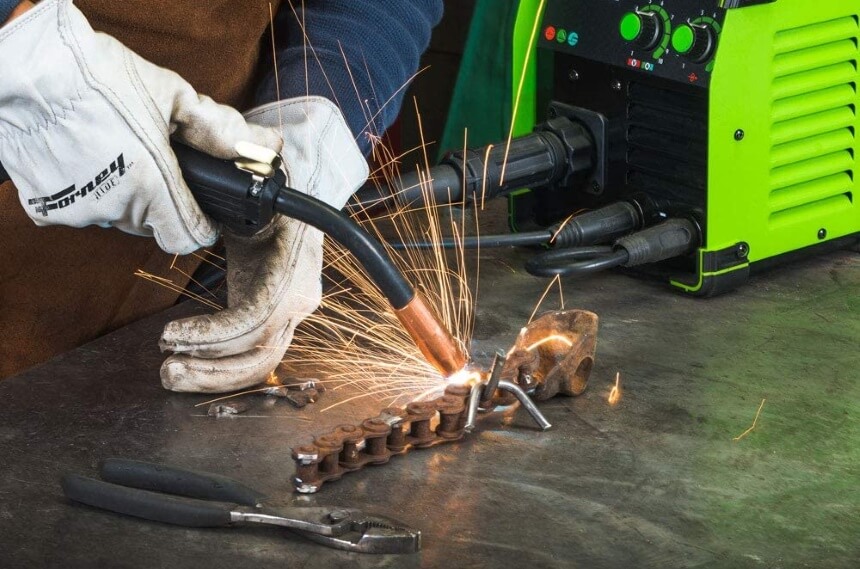
There are a few factors to consider when determining which metals are weldable. The main factor is the chemical composition of the metal. Carbon steel and stainless steel are both weldable, for example, because they have relatively low levels of carbon. Aluminum is also weldable, but it requires a different welding process than other metals.
It is essential to use suitable filler metal for the job when welding.
When it comes to welding, one of the most important factors is the diameter of the welding wire. The right size welding wire will ensure that your welds are solid and durable. However, picking the wrong size can result in weak and brittle welds.
The maximum welding wire diameter will vary depending on the type of welding. For example, MIG welds can typically use a thicker wire than TIG welds. Generally, here are the maximum welding wire diameters for the most common welding types:
– MIG welds: .030-.035 inches
– TIG welds: .020-.025 inches
– Stick welds: .045-.070 inches
When choosing the right size welding wire for your project, you need to consider a few factors. First, you need to think about the thickness of the metal you are welding. The thicker the metal, the thicker the welding wire you will need. You also need to consider what type of weld you are doing. Some welds require a stronger bond than others do.
If you are unsure about what size welding wire to use for your project, it is always best to consult with a professional. They will help you choose the correct size welding wire for your needs and ensure that your welds are solid and durable.
A single-phase welder uses direct current (DC), meaning the electrode and the welding area are always at the same polarity. This is the most common type of welder. A three-phase welder, on the other hand, uses alternating current (AC). This means that the electrode and welding area are constantly changing polarity, making for a more consistent weld.
While single-phase welders are the most common, they can only be used with 120V outlets. If you need to weld something thicker than 1/4” or if you want to use a larger electrode, you will need a three-phase welder. Luckily, most Forney Easy welders are three-phase welders.
TIG welding is often used for welding thin metals because it produces a very clean weld with minimal distortion. It can also be used to weld alloys such as aluminum and magnesium, which are difficult to weld with other methods. TIG welding is more complicated than different types of welding, so it is usually best to learn how to do it from a qualified instructor.
FCAW is generally used for thicker materials that are difficult to weld with other methods. FCAW is a popular choice for welders because it is relatively easy to learn and produces high-quality results.
With a duty cycle of 80A at 30% for 120V, this welder can handle any job you throw at it. Whether you are welding 1/4in. mild steel or repairing a car, the Forney Easy Weld 180 ST Stick Welder is up for the challenge.
The Forney Easy Weld 140 MP is a 3-in-1 multi-process unit that can do stick, MIG, and DC TIG welding. It’s perfect for anyone who wants to start welding or needs an extra welder for their business.
The Forney Easy Weld 20P Plasma Cutter is the perfect choice for anyone looking for an easy-to-use and lightweight plasma cutter. With its Drag Torch Technology, this plasma cutter makes it easy to cut through various metals up to 1/4in. thick.
